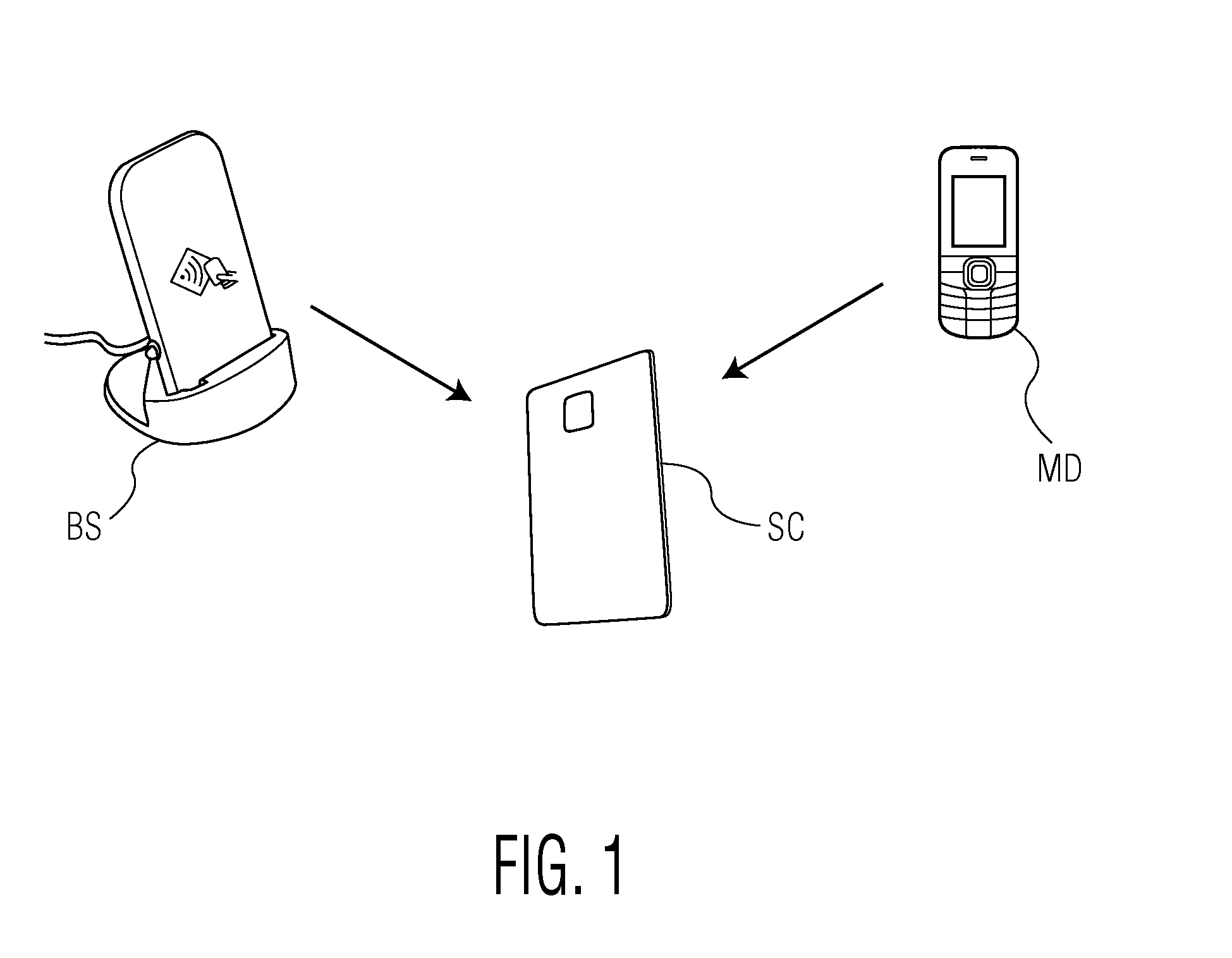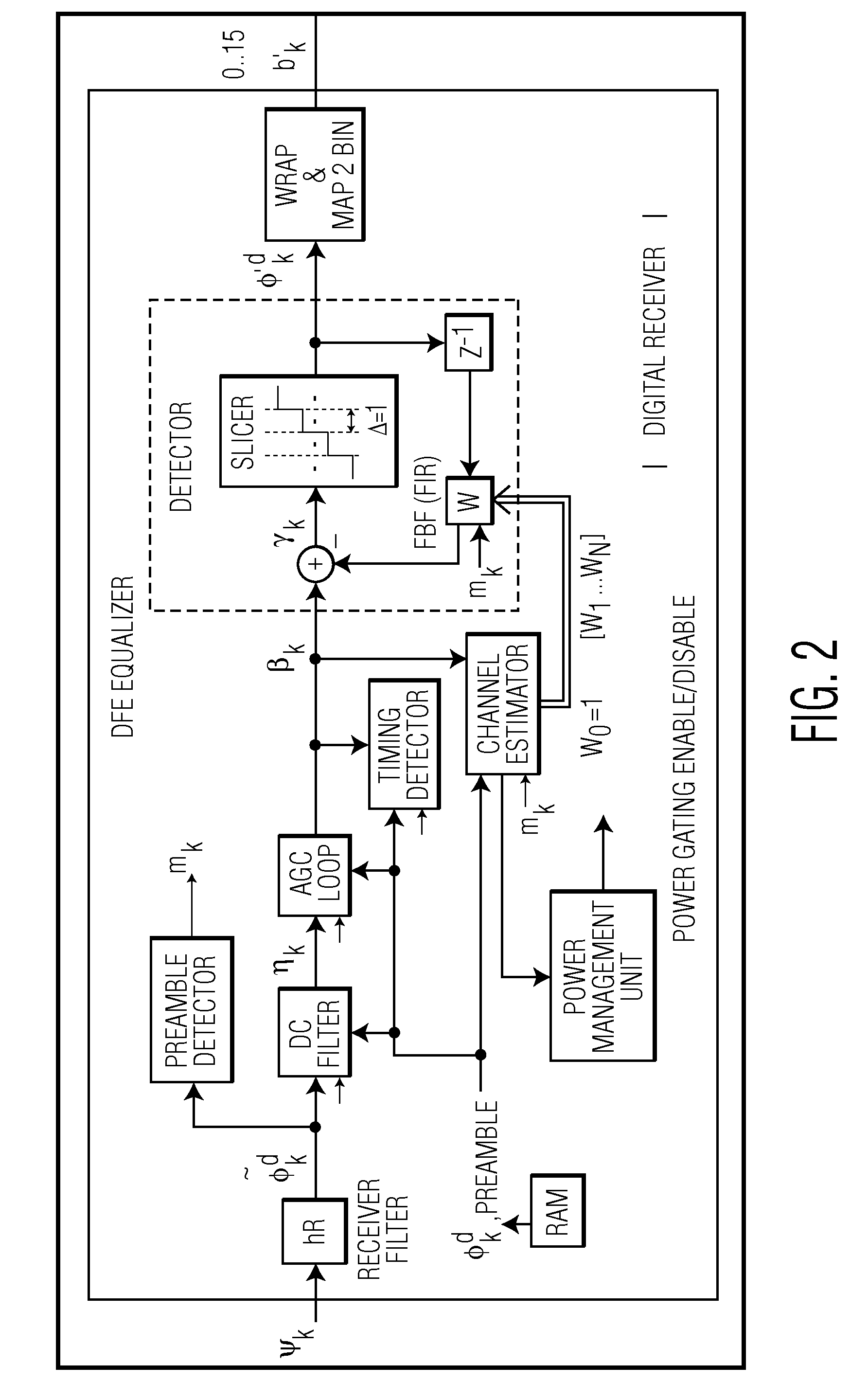Smart card
a smart card and card body technology, applied in the field of smart cards, can solve the problems of increasing power consumption at the transmitting side, affecting the received signal, and other non-idealities, so as to avoid long preambles for calibration purposes
- Summary
- Abstract
- Description
- Claims
- Application Information
AI Technical Summary
Benefits of technology
Problems solved by technology
Method used
Image
Examples
Embodiment Construction
[0022]FIG. 1 shows a smart card SC which communicates either with a reader unit BS connected to a power supply net or with a reader unit MD comprised in an NFC-enabled mobile device. As explained above, the power requirements of reader units are completely different depending on the application domain. The digital signal processing receiver comprised in the smart card according to the invention is arranged to determine the quality of a signal received from the reader unit by determining the error vector magnitude of this signal. Techniques for determining the error vector magnitude of a signal are known as such.
[0023]FIG. 2 shows an example of a digital signal processing receiver according to the invention. In operation, the digital signal processing receiver uses commonly employed front-end circuits to calibrate signal parameters such as DC, gain and timing. This is achieved during a first preamble which comprises a basic training sequence for calibrating the signal parameters. In ...
PUM
 Login to View More
Login to View More Abstract
Description
Claims
Application Information
 Login to View More
Login to View More - R&D
- Intellectual Property
- Life Sciences
- Materials
- Tech Scout
- Unparalleled Data Quality
- Higher Quality Content
- 60% Fewer Hallucinations
Browse by: Latest US Patents, China's latest patents, Technical Efficacy Thesaurus, Application Domain, Technology Topic, Popular Technical Reports.
© 2025 PatSnap. All rights reserved.Legal|Privacy policy|Modern Slavery Act Transparency Statement|Sitemap|About US| Contact US: help@patsnap.com



